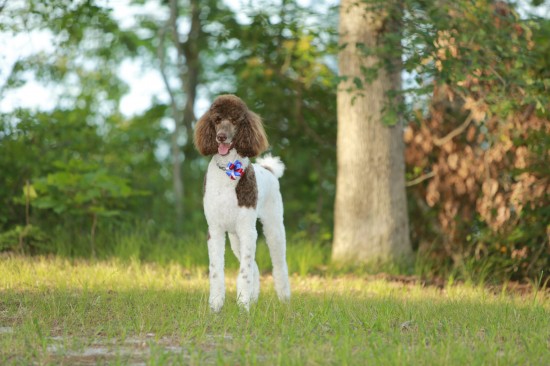
This is ‘Part One’ of a series on Tick & Flea control programme.
Most of the animal owners face a real challenge in tackling
ticks, fleas and lice which infests their animals resulting in
reduced productivity and health. Even more importantly, they
are also concerned about the zoonotic nature of those
infestations.
In-fact, field veterinarians are mostly smart enough in
choosing the best molecule to tackle this menace, but
the issue is also related to the compliance on the animal
owners’ side. And, animal owners are often unaware of
the many marketing gimmicks, tactics and arm-twisting
practices of the trade.
Field practitioners are often concerned with the indications
and contra-indications of the product. Other than this, many
pharmaceutically significant aspects influence the real field
effectiveness and product compliance.
A simple point to illustrate is that, many synthetic preparations are photo-sensitive and as such, these products may have undergone considerable degradation before reaching the client ! Typically, the product would have been exhibited in the trade counters for days and kept even at window-panes of animal shelters before it was applied. This stresses the importance to choose a reliable and time-tested product from the market as proven manufacturers always (or know how to) use more ‘ chemically stable or competent ‘ formulations.
This raises question to the mere concept of “chemical analysis”
to prove label claim and effectiveness. Emulsion properties,
particle size, water miscibility, penetrability, biological activity, therapeutic index, mammalian toxicity and rheologic properties are only a few of the other numerous parameters considered.
Also important is the knowledge about the combination of
formulations you choose. When you choose a particular brand
of ecto-parasiticide for spraying around the animal house and
resting places, it is equally important to use similar classes of compounds to be applied as dusting powders. This gives an
extra edge to your tick & flea control programme. Be cautious
when preferring brands that cannot complement your strategy,
i.e., using different formulation of the same chemical, at the same time. Of course, one formulation may be quiet effective; but use of different molecules at the same time may induce conditions of cross-resistance.
Compliance of a product starts right from the ease of opening
the containers ! Some of the containers are too strong, secure
or tiny that it may be quite difficult for the animal keeper / owner to open it efficiently without any difficulty or spill offs. Ask your vet to open such ‘secure’ or ‘ tiny’ containers themselves and imagine how the laymen would have handled it. Many of the containers are just adaptations of other product packings or use of idle machine lines. As you would agree, the containers should be of reasonable size and sealing for client convenience.
Also, the highly priced product need not always be the best
in the market. Pricing of similar formulations of different
companies are wildly deviating. Then, where are these huge
margins diverted ? Truly, such products are not priced on the
cost price plus margin, but certainly on the concept of how
much you can afford to pay or opportunity cost.
Ask the product executive of each company about their trade
discount structure and free offer trade policies ! Probably,
it will be difficult to know the real situation; but if you get the chance, you will be amazed to know the real market game.
Obviously, the heavy free-trade-offer pushing is seen for the
new market entrants as well as for the poor product players.
For certain antibiotics, there are even 1:1 free offers in the
wholesale trade, just for “retail counter – pushing ” !
On the other hand, stronger brands can always offer competitive
pricing by mass production and balancing their overheads on a
range of their own products. Again, remember to avoid spurious,
inferior or cheap products. Quite sadly, ‘copy-cats’ follow the
most unethical means of selling.
Here is where the vet’s prescription preference decides; whether the animal owner can afford such inflated / unethical pricing or the vet’s ability to strike a balance between product performance and market dynamics. Or do you think the animal owners would comply the prescription when he finds the product too expensive?
Visit http://www.vethealth.com for more Articles & Subscribe to their widely acclaimed FREE eMagazine ! This site contains numerous valuable information for animal owners and veterinarians. The Author Mr. ANOJ J. CHEERAN B.Pharm, MBA is the Director(operations) of Cheerans Lab (P) Limited http://www.cheerans.com -one of India’s oldest Animal Health Products company, part of the Cheerans group started in 1904. The company also runs Informational Veterinary Search website http://www.cheerans.org
 The Many Poodle Colour Combinations And Markings
The Many Poodle C
The Many Poodle Colour Combinations And Markings
The Many Poodle C
 Dogs And Snoring - Is It Cause For Concern?
Dogs And Snoring
Dogs And Snoring - Is It Cause For Concern?
Dogs And Snoring
 Why Do Pets Have Tails - And Why Don’t People?
Why Do Pets Have
Why Do Pets Have Tails - And Why Don’t People?
Why Do Pets Have
 Canine Eye Problems Commonly Confused With Cataracts
Canine Eye Proble
Canine Eye Problems Commonly Confused With Cataracts
Canine Eye Proble
 Jellyfish as Pets
A Jellyfish is a soft-shelled marine creature with a body l
Jellyfish as Pets
A Jellyfish is a soft-shelled marine creature with a body l
Copyright © 2005-2016 Pet Information All Rights Reserved
Contact us: www162date@outlook.com